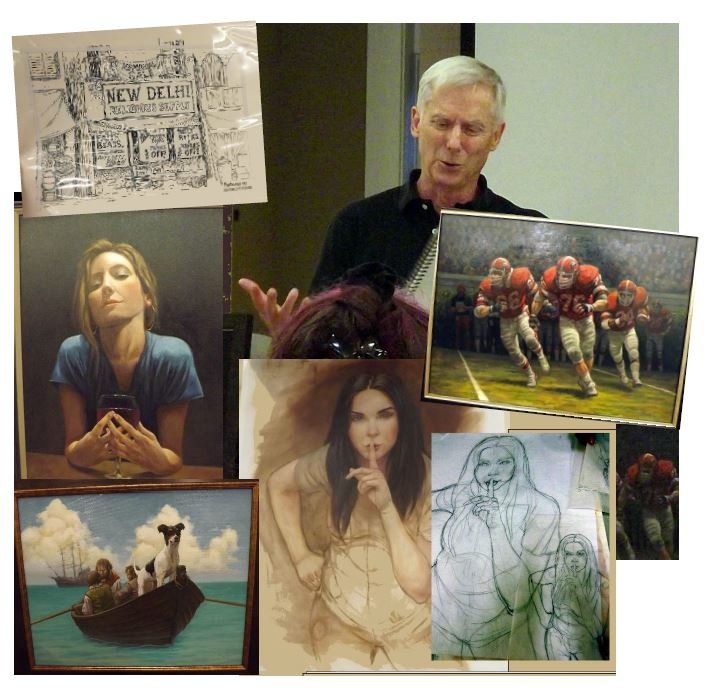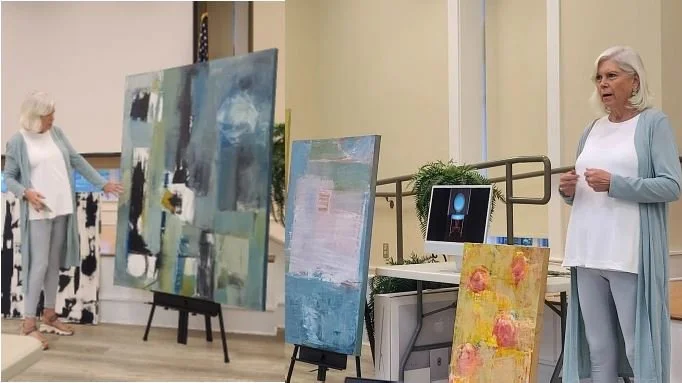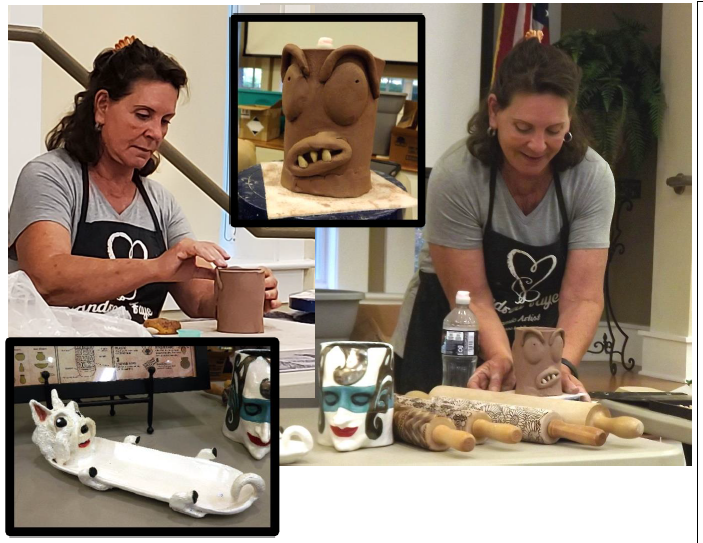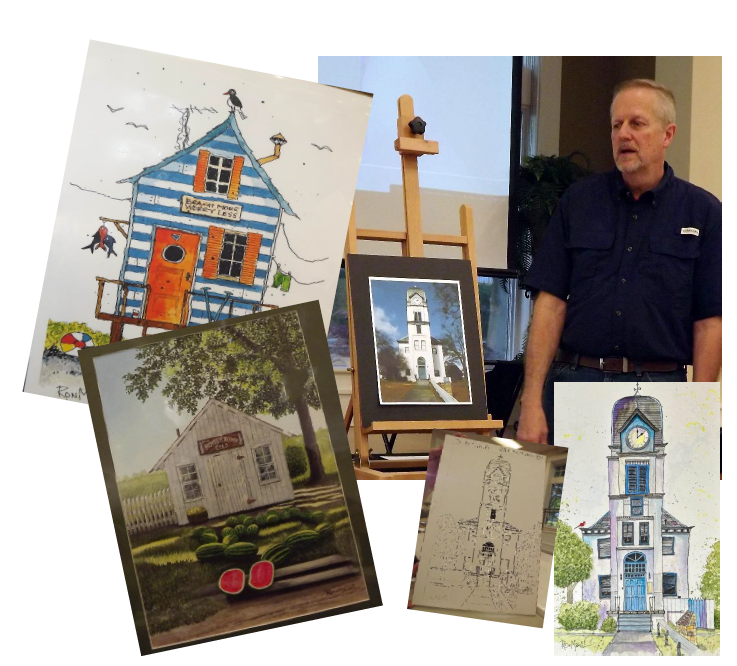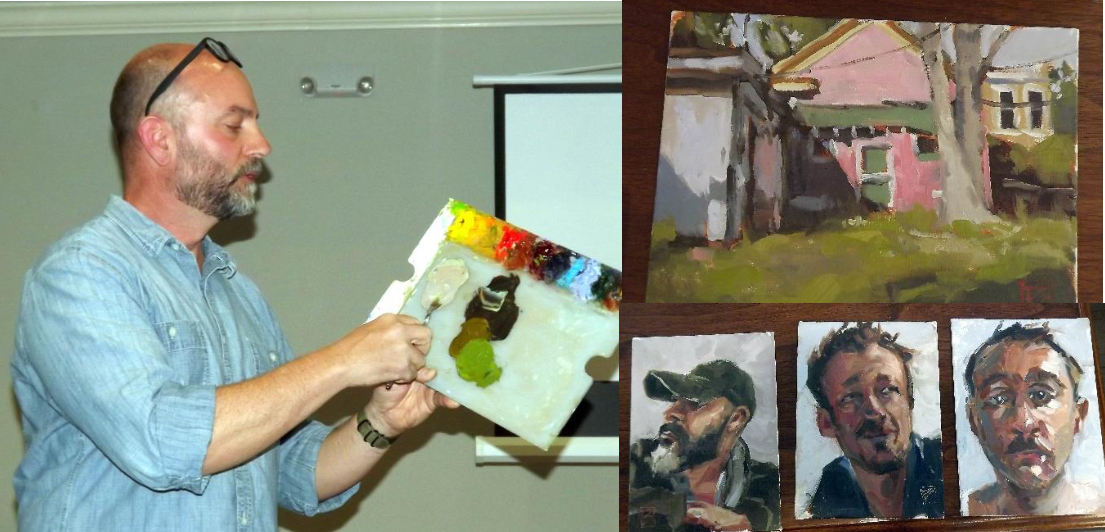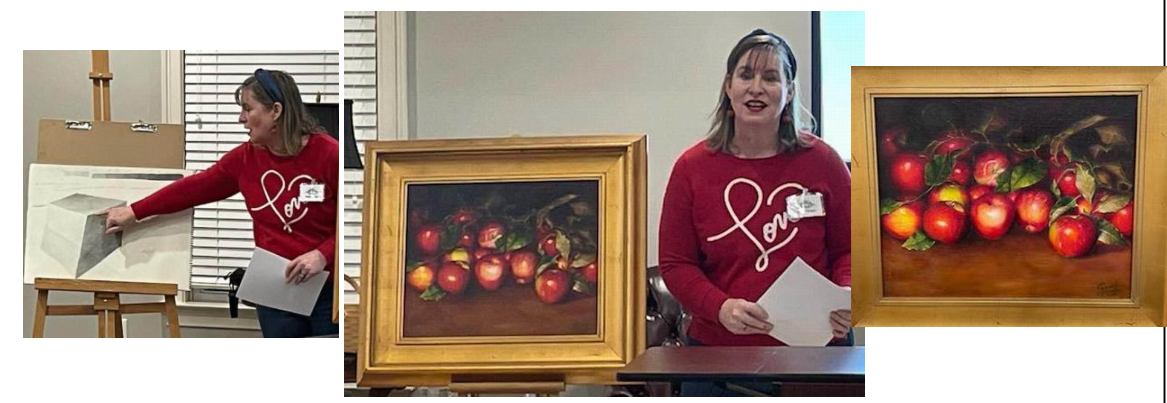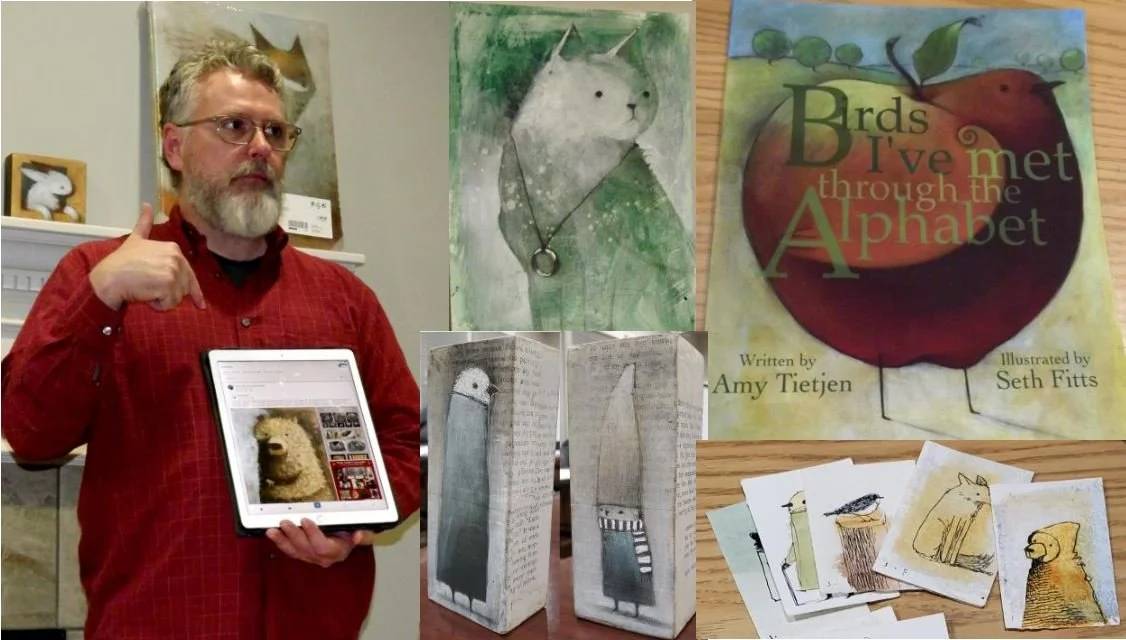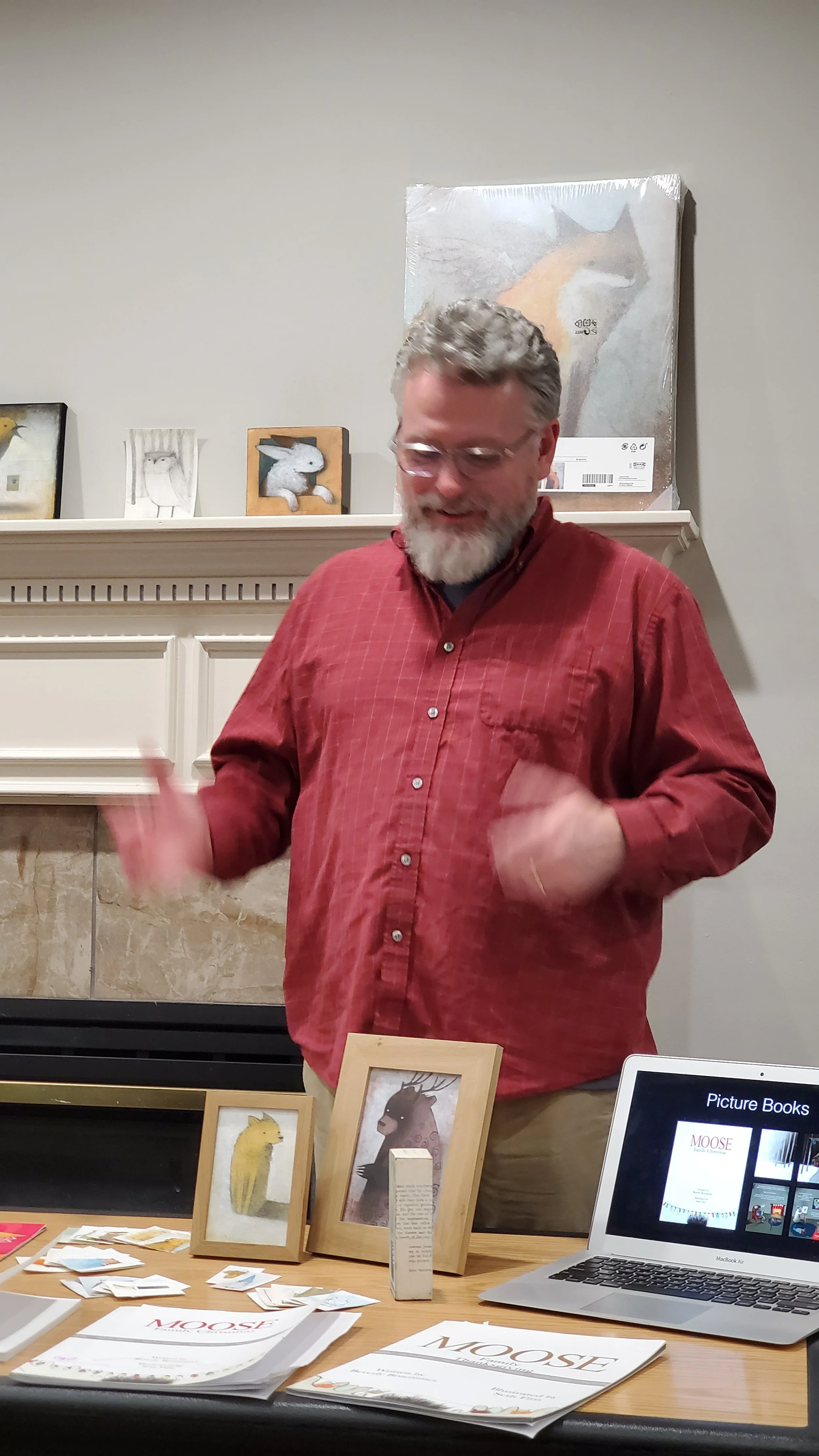August 2023 Michael Montgomery, Illustrator to Studio Painter
/Michael Montgomery started his artistic journey in illustration
July’s demo was presented by Michael Montgomery. Michael has a very lively talk about how he got into the world of art and eventually ended up creating fine art.
He decided to teach himself art because he didn’t get good feedback from his college professors at UGA. Michael is from Macon, Ga and started out working for “exposure” making buttons and graphics for water bottles. He learned to illustrate by going to the library.
Right after he married, he went to New York and went to Mad Magazine and was told that he needed to move to a city where illustrated art is purchased. So he and his wife relocated to New York where he hit the streets of Manhattan with his portfolio, hoping to land a job. The Tribune called and he was hired as a political cartoonist!
Newspapers at the time only registered black and white. It was very difficult to create the illustrations without making mistakes. Someone told him about a Blue pen called “Non repro blue” that the camera couldn’t see and suddenly drawing was SO easy! When Michael was producing political cartoons he never worked in color.
Michael moved back to Georgia with his family and began working for Ad agencies, illustrating books, etc. He said he never knew of anyone doing a small art piece and then blowing it up; it’s always the other way around. When you reduce a piece, the mistakes are also reduced.
He continued his education by using books and practicing- he has stacks of sketch books filled with anatomy drawings that he copied from books. He learned how to work in color from practicing what he was seeing in illustrators annuals but the learning was very slow.
Michael explained that the way illustration works is that there was a ‘stable’ of illustrators and the editors knew what each artist could do well and there wasn’t any crossover. If you did children’s book illustrations, no one asked if you could draw vehicles or portraits.
Michael enjoyed the work as an illustrator because you were given parameters (what was needed, how many pages, etc.) and a deadline so it was like a puzzle to solve. It was all business and they wanted to work with you to make money. An illustrator’s job was to make their wishes look good so that you’d get other jobs.
He moved from illustrations to artist because things like computers and Adobe Photoshop came along that made illustration much faster and cheaper. Progress has chipped away at traditional illustration by hand. Michael said he found it hard to come up with ideas as a studio artist. Coming up with the problem or idea was not his job before- he just had to make it happen.
As he transitioned to fine art, he found it harder because the artist makes all the decisions. So now, he asks his wife. Michael said he could easily start obsessing over something and end up stuck. Michael says he will paint from anything that works. The only thing that counts is the final product. He likes to print out he drawings big – at the size he plans to paint (he has a big printer) and then critiques it; making changes. He then reprints his final source image to start painting. Michael says he practices a lot and has over 70 sketchbooks full of drawings trying to get ideas down.
He works progressively from the bottom moving up the subject to the focus of interest area. Michael uses oils with Alkyd resin and Gamblin (Galkid) medium to mix with the oil to speed up drying time. He started out painting on illustration board because it was cheaper. The last thing in working a portrait is to put the highlights in the eyes.
He has done a lot of sports stuff for schools and some sell very well, while others don’t. It depends on who is doing the marketing for him. He has been doing commissions and painting in fine art for four years.
Michael does not teach but we all learned from his presentation that he has a wonderful way with telling a story!


